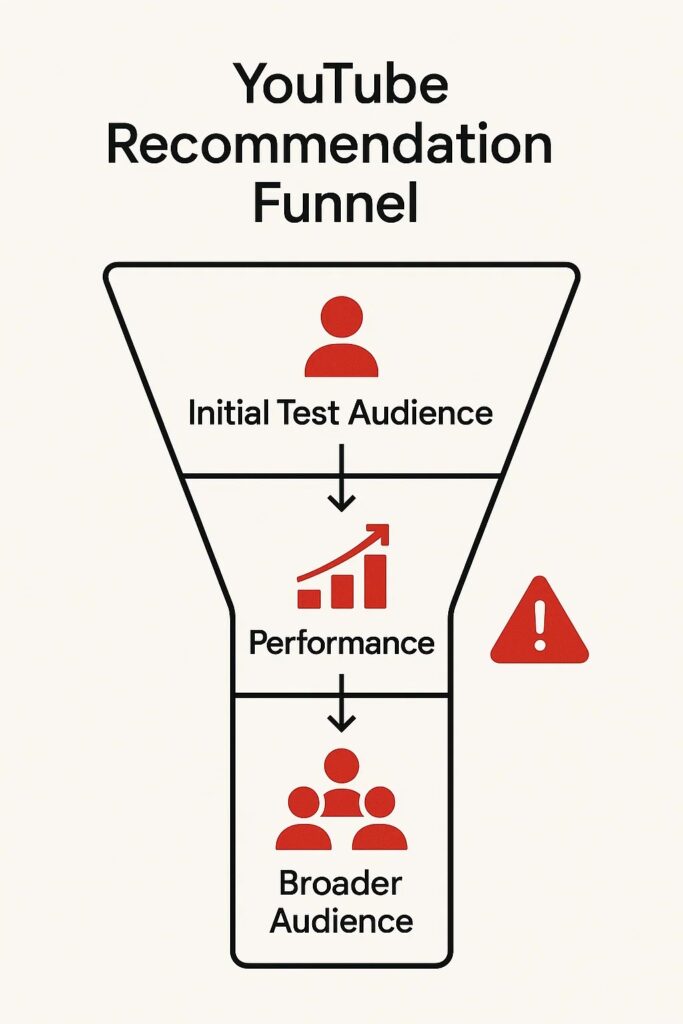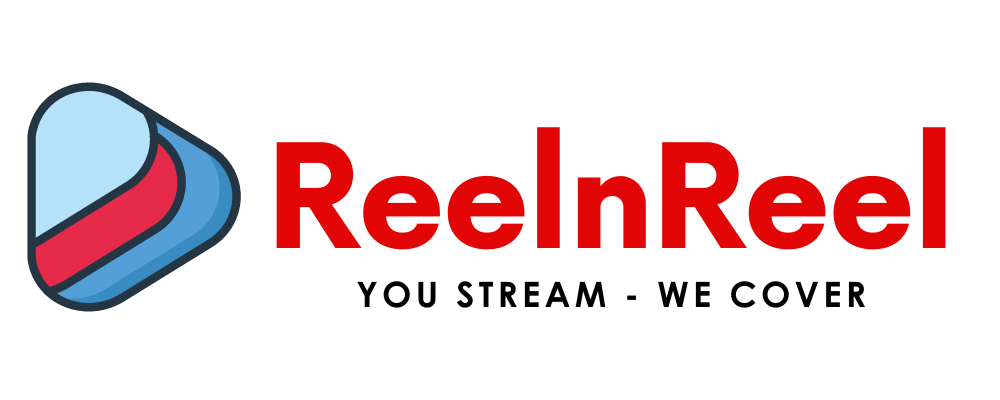In 2025, the YouTube algorithm will be one of the digital content ecosystem’s most complex and influential systems. It controls discoverability, engagement, monetization, and audience retention for long-form and Short-Form content.
This comprehensive guide breaks down every major algorithm component, including user experiences, engagement metrics, personalization mechanics, discoverability funnels, and Shorts dynamics, while outlining actionable strategies and highlighting the broader societal implications of its design.
Personalization and Relevance: The Core of the Algorithm
The YouTube algorithm is fundamentally personalized. Every user receives a curated experience based on their:
- Watch history
- Engagement (likes, comments, shares)
- Subscription behavior
- Search queries and time-of-day usage
Users frequently describe the algorithm as “creepily accurate,” often surfacing content aligned with latent interests. Sometimes, the algorithm anticipates user preferences before the user is fully aware, creating a sense of predictive personalization.
Ch Time: Total minutes watched per video/session.
Click-Through Rate (CTR): The ratio of clicks to impressions.
Session Duration: How long a user remains on the platform post-video.
Engagement: Likes, dislikes, comments, shares, and subscriptions.
Return Viewers: Repeat visits by the same user boost a channel’s favorability.
These metrics are interdependent. For instance, a high CTR with low watch time signals clickbait or low-quality content, reducing promotion.
Funnel-Shaped Recommendation Structure: Initial Testing, Then Scale
Content visibility follows a funnel-shaped distribution:
- Initial Testing: Videos are tested on a small audience (often subscribers or similar interest profiles).
- Performance Review: If the content performs well (CTR + retention), it’s promoted to a broader, non-subscribed audience.
- Scaling: Viral content expands across related verticals and geo-targeted demographics.
Creators must hook viewers within the first few seconds to pass the critical initial testing phase and avoid the plateau of 100–300 views.

YouTube Shorts Algorithm: Separate, Swipe-Based, and Opportunistic
Structural Separation
The Shorts algorithm is independent of long-form recommendations. It uses a swipe-based feed, where user intent is reactive rather than proactive. This feed demands immediate engagement to avoid being swiped away.
Explore-Exploit System
- Explore Phase: Based on recent behavioral signals, shorts are served to a targeted seed audience.
- Exploit Phase: If a Short performs well (high viewed/swiped ratio, likes, comments), it’s pushed to a broader base.
Core Ranking Metrics for Shorts
- Viewed vs. Swiped Away Rate: A high completion rate is key.
- Watch Time & Rewatches: Longer average view durations matter.
- Engagement Metrics: Comments, shares, and subscriptions.
- Freshness Window: Shorts receive algorithmic priority within 24–72 hours.
- Viewer Behavior Match: Shorts aligned with user interests have higher visibility.
Video Length & Hook
Shorts can run up to 3 minutes, but 45–60 seconds perform best due to optimal watch time and retention. The first 3 seconds are crucial to hooking attention.
Creator Challenges: Visibility, Engagement, and Algorithmic Penalties
Small Creator Hurdles
New creators struggle to gain visibility due to:
- Lack of subscriber base
- Initial low engagement (e.g., “100 views, seven likes, no comments”)
- No exposure on subscriber homepages despite publishing
Thumbnail and Title Pressure
High CTRs are often achieved through:
- Clickbait titles (e.g., “10 AI tools that changed my life”)
- Exaggerated thumbnails (face reactions, emojis, bold fonts)
- Poor thumbnails can cause CTR drops below 6%, leading to algorithmic deprioritization.
Spoiler Risks and Irrelevant Recommendations
Users complain about:
- Spoilers: For shows, games, and movies, it is recommended to be used prematurely.
- Over-personalization: One engagement with niche content (e.g., Sherlock AMVs or detransitioners) results in a flood of similar recommendations.
- Redundant Recommendations: Videos already watched are often resurfaced.
Algorithm Bias, Manipulation, and Ideological Drift
Emotional Amplification
The algorithm favors polarizing content due to higher engagement:
- Outrage
- Shock
- Controversy
This has led to disproportionate promotion of:
- Far-right content
- Misogynistic ideologies
- Misinformation or political propaganda
External Manipulation
Concerns exist about:
- Bot farms artificially inflate views/engagement
- State actors (e.g., Beijing) are flooding comment sections
- Foreign influence in shaping youth narratives
A Princeton study warns about the psychological impact of such algorithmic exposure, especially on young men.
Now drive traffic from Short to long-form formats for deeper audience engagement.
Monetization Framework: Shorts and Long-Form
Shorts Monetization Requirements:
- 1,000 subscribers
- 10 million valid Shorts views in 90 days
Monetization is based on:
- Engaged Views (intentional watches)
- Production Quality (1080p+, audio clarity)
- Ad-friendliness and compliance with guidelines
Long-Form Content Monetization:
- Long-form videos (8+ minutes) allow for mid-roll ads
- Higher watch time = greater ad revenue potential
Optimization Strategies for 2025
For Long-Form Creators:
- Start with a strong hook in the first 10 seconds
- Use trending topics in your niche
- Schedule uploads consistently (e.g., 2–3x/week)
- Encourage in-video engagement (likes, subs, comments)
- Design expressive thumbnails with CTR in mind
For Short Creators:
- Craft punchy openers (<3 seconds)
- Maintain a 5a 0–60 second length with clear storytelling
- Use trending hashtags and relatable hooks
- Post frequently (3–5x/week) for algorithm familiarity
- Avoid deleting and uploading (can trigger spam filters)
Universal Tips:
- Use YouTube Studio’s “What Your Audience Watches” tab
- Analyze CTR, AVD, and Viewed vs. Swiped metrics
- Cross-promote Shorts and long-form content
- Engage with the audience in comments to foster loyalty
Analytics and Performance Tracking
YouTube now provides deeper insights via:
- Viewed vs. Swiped Away (Shorts-specific metric)
- Engaged Views for monetization
- “Research” Tab for keyword and audience topic analysis
- Performance segmentation across device type, region, and audience overlap
Algorithm Unpredictability and User Frustration
Users often describe the algorithm as:
- “Unhinged”
- “Broken”
- “Too reactive to minor interactions.”
This results in:
- Irrelevant video floods
- Algorithmic overcorrection
- Diminished content trust
Cultural and Societal Impact
The engagement-first nature of the algorithm fuels:
- Echo chambers and ideological reinforcement
- Disinformation loops from high-engagement false narratives
- Polarization, especially in political and gendered discourse
Creators and users alike must consciously break cycles of narrow exposure to foster a healthier digital environment.
Conclusion: Navigating the Algorithmic Battlefield
The YouTube algorithm in 2025 is an intricate, dynamic system that governs content discovery, rewards engagement, and subtly shapes culture. Whether creating Shorts or long-form content, success depends on understanding the algorithm’s mechanics, embracing optimization strategies, and adapting to ongoing changes.
Mastering titles, thumbnails, hooks, and metadata is no longer optional for creators. Curating one’s feed through watch behavior, likes, and “not interested” selections is essential for users.
By treating the algorithm as both a tool and a challenge, creators and consumers can better navigate this powerful, often unpredictable platform and use it to build genuine reach, resonance, and results.
Frequently Asked Questions (FAQs)
How does the YouTube algorithm work in 2025?
The 2025 YouTube algorithm is a complex system that uses machine learning to personalize recommendations based on user behavior, engagement signals, and content type, prioritizing relevance and retention.
What does YouTube use the main personalization signals?
Watch history, engagement (likes, shares, comments), subscription behavior, search queries, and time-of-day usage all influence a user’s personalized feed.
What metrics influence video recommendations on YouTube?
Key metrics include Watch Time, Click-Through Rate (CTR), Session Duration, Engagement (likes/comments), and Return Viewers.
What is the funnel structure of YouTube content recommendations?
YouTube tests content with a small sample audience. If performance metrics are high, the video is scaled to broader viewers, including non-subscribers.
How is the Shorts algorithm different from the long-form algorithm?
YouTube Shorts has a separate, swipe-based recommendation engine that prioritizes immediate engagement and reactive behavior instead of proactive search.
What metrics determine Shorts performance in 2025?
Viewed vs. Swiped Away ratio, average watch time, rewatch rate, engagement (likes/comments), and freshness (typically 24–72 hours) are critical.
Why are the first few seconds crucial in Shorts and long-form videos?
A compelling hook in the first 3–10 seconds determines whether a viewer continues watching or scrolls/swipes away, influencing visibility.
Do YouTube Shorts help grow long-form video channels?
In 2025, YouTube introduced persistent links within Shorts to help creators drive traffic to long-form videos, partially bridging the discovery gap.
What are the requirements for monetizing Shorts in 2025?
To qualify for monetization, creators need 1,000 subscribers and 10 million valid Shorts views in 90 days.
What content strategy works best for long-form videos?
Effective strategies include using a strong hook, trending topics, engaging thumbnails, regular uploads (2–3x/week), and interactive CTAs.
How can creators optimize their metadata for better reach?
Use relevant, keyword-rich titles and descriptions, avoid TikTok watermarks, and apply strategic hashtags for improved discoverability.
What challenges do new or small creators face in 2025?
They struggle with visibility due to low initial engagement, lack of homepage exposure, and algorithmic bias favoring already-successful channels.
What are the common pitfalls with thumbnails and titles?
Low CTR thumbnails or misleading clickbait titles can lead to algorithmic suppression. Thumbnails below a 6% CTR are often deprioritized.
How can users manage over-personalization or irrelevant content?
Users should use “not interested” feedback and diversify watch behavior to rebalance the algorithm’s recommendations.
What are the dangers of algorithmic bias and manipulation?
Due to high engagement, the algorithm may promote polarizing or controversial content, potentially leading to ideological echo chambers and misinformation.
How does YouTube handle manipulated engagement (e.g., bots or state actors)?
While YouTube deploys detection systems, concerns remain about bot-driven views, foreign influence, and coordinated comment manipulation.
What’s the ideal length for Shorts in 2025?
45–60 seconds is the sweet spot—long enough to develop a narrative while maintaining high completion and engagement rates.
Can deleting and reuploading content affect algorithmic visibility?
Yes, it can trigger spam filters, reduce credibility, and disrupt momentum. Instead, creators should focus on improving existing content.
What are YouTube’s new analytics features in 2025?
YouTube Studio now includes metrics like Viewed vs. Swiped (for Shorts), Engaged Views (for monetization), and performance segmentation by device, region, and overlap.
How can creators and viewers navigate algorithmic unpredictability?
By consistently analyzing analytics, refining strategies, and providing authentic engagement, creators can build sustainable growth despite algorithm volatility. Users can curate their experience by adjusting their engagement and feedback behavior.





